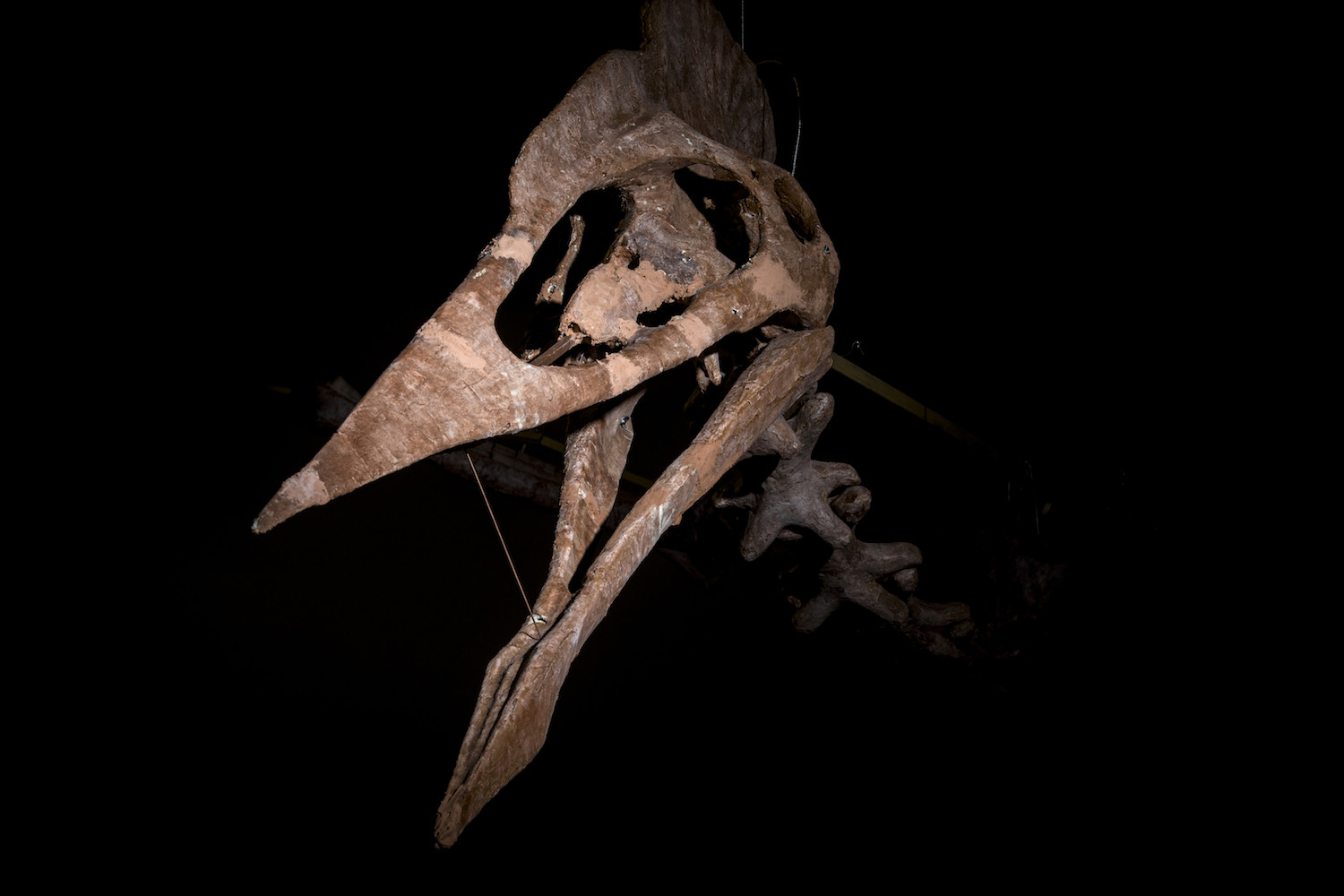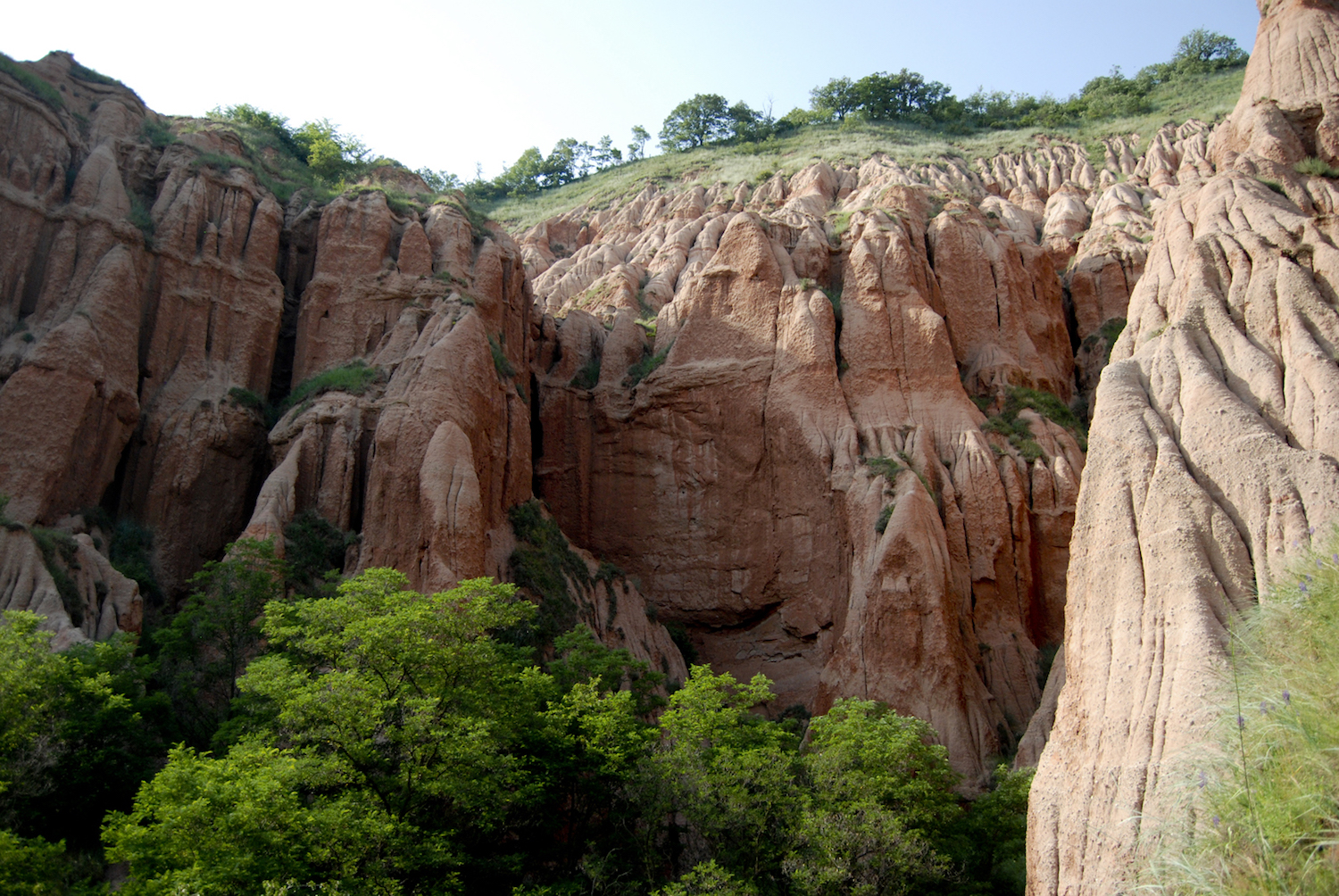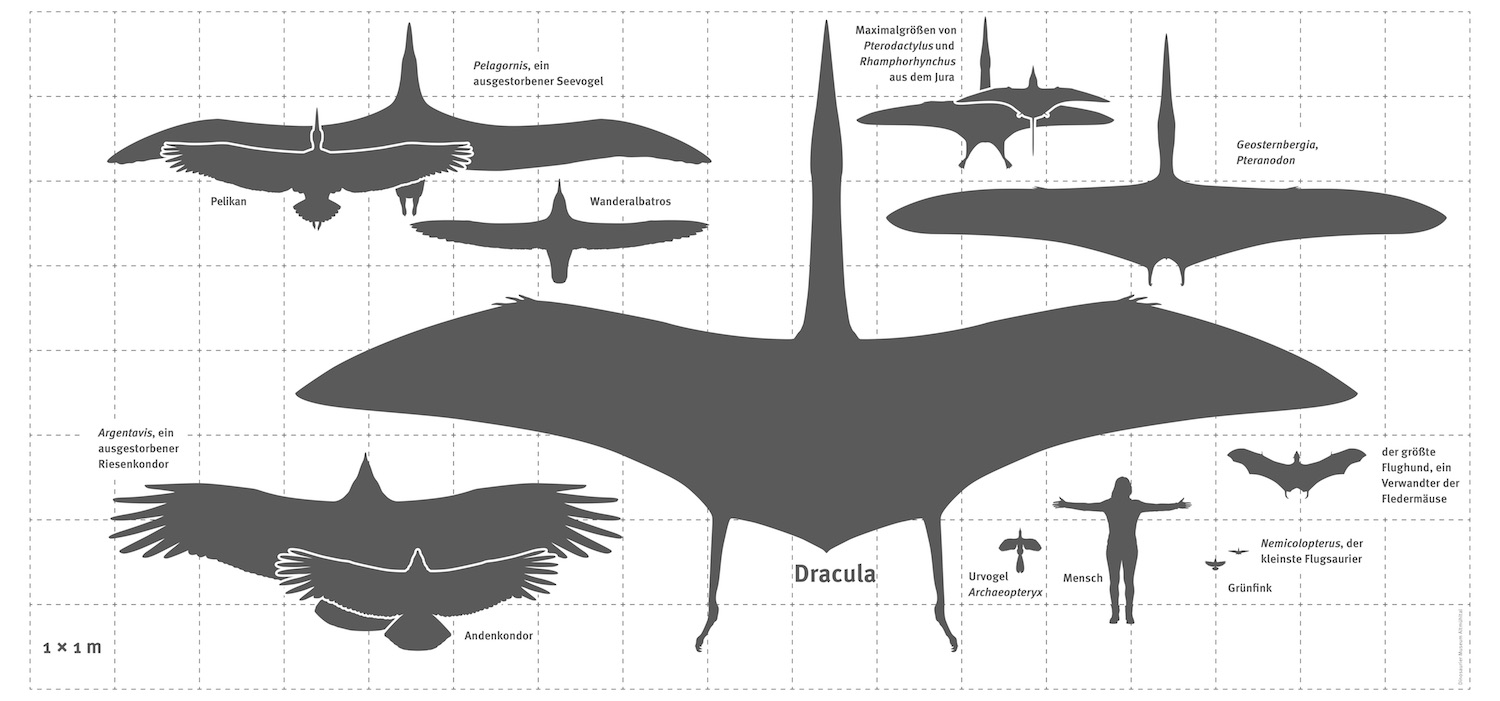World's Largest Pterosaur Jawbone Discovered in Transylvania

The largest pterosaur jawbone on record has just been analyzed, and it's so big that it likely helped the prehistoric beast gulp down freshwater turtles and large dinosaur eggs for dinner more than 66 million years ago, a new study finds.
The fossil of the pterosaur's robust lower jaw is a mere 7.4 inches (18.8 centimeters) long, but the jawbone likely measured longer than a yardstick — or between 37 and 43 inches (94 and 110 cm) — when the reptile was alive, the researchers wrote in the study.
This absurdly long jaw is "more than three times the size of the complete, 290-millimeter-long [11.4 inches] holotype mandible of Bakonydraco," a pterosaur that appears to be closely related to the newly analyzed creature, the researchers wrote in the study. [Photos: Baby Pterosaurs Couldn't Fly as Hatchlings]
Study co-researcher Dan Grigorescu, a geologist at the University of Bucharest in Romania, collected the fossilized jawbone at the junction of two creeks in the Hațeg Basin, near the village of Vặlioara, which is in Transylvania, Romania, in 1984. But the fossil wasn't recognized as belonging to a pterosaur until 2011, when lead study researcher Mátyás Vremir, a geologist at the Transylvanian Museum Society, and study co-researcher Gareth Dyke, a paleontologist at the University of Debrecen in Hungary, realized its importance, according to National Geographic.

During the Cretaceous period, when this pterosaur was alive, Hațeg Basin was an island inhabited by dwarf dinosaurs, which were smaller than their counterparts on the mainland. Vremir unearthed the fossilized remains of one of these weird, stocky dinosaurs — a predator known as Balaur bondoc — in 2009, Live Science previously reported.
But Hațeg is also known for large pterosaurs, including Hatzegopteryx, which likely stood as tall as a giraffe, with a wingspan of up to 36 feet (10.9 meters). Another pterosaur from Hațeg, nicknamed Dracula, had an even larger wingspan of up to 39 feet (12 m).
"Islands are notorious for throwing up oddities. We have a bunch of weird dinosaurs from Hațeg and a lack of really big carnivores, so the pterosaurs were basically tyrannosaur surrogates," Dave Hone, a paleontologist at Queen Mary University of London in England, told National Geographic.
Sign up for the Live Science daily newsletter now
Get the world’s most fascinating discoveries delivered straight to your inbox.

But just because the newly studied pterosaur — which has yet to be scientifically named — has the largest jawbone ever found, it doesn't necessarily mean it was the biggest pterosaur on record, the researchers said. Rather, it probably had a wingspan of over 26 feet (8 m) and likely belonged to a family of pterosaurs known as the Azhdarchids, the researchers wrote in the study.
"It's always exciting to see new Azhdarchid material in the literature, especially fossils of giant pterosaurs," Kierstin Rosenbach, a doctoral student in the Department of Earth and Environmental Sciences at the University of Michigan who wasn't involved in the study, told Live Science.
The researchers discussed the different sizes and shapes of Azhdarchid pterosaurs — characteristics that are much appreciated by paleontologists who study pterosaurs, she said. That's because there appears to be a division within Azhdarchidae that the researchers elaborated on: "The authors state that Azhdarchids could have either long necks with thin skulls or short necks with robust skulls," Rosenbach said.
So, which camp does the newly analyzed pterosaur fall into? It's likely "a robust, short-skulled azhdarchid," the researchers said in the study.
The study was published online April 17 in the journal Lethaia.
Original article on Live Science.

Laura is the archaeology and Life's Little Mysteries editor at Live Science. She also reports on general science, including paleontology. Her work has appeared in The New York Times, Scholastic, Popular Science and Spectrum, a site on autism research. She has won multiple awards from the Society of Professional Journalists and the Washington Newspaper Publishers Association for her reporting at a weekly newspaper near Seattle. Laura holds a bachelor's degree in English literature and psychology from Washington University in St. Louis and a master's degree in science writing from NYU.









